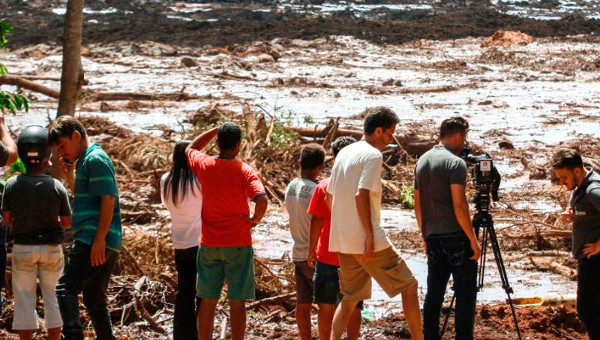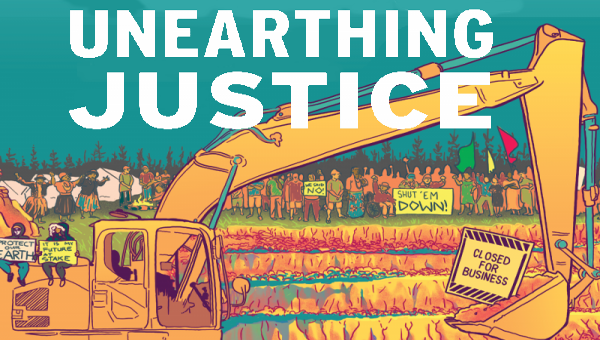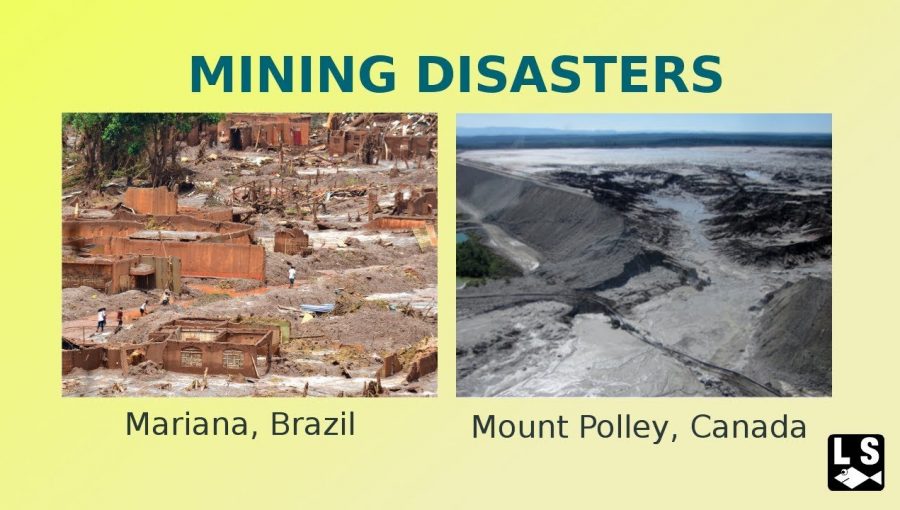Ottawa Tar-Sands Protest: Reports and Impressions
I participated in the demonstration against the Alberta tar sands outside the Canadian Parliament here in Ottawa on September 26. As was widely reported, the civil disobedience component of the action resulted in over 200 arrests.
I am cross-publishing here two accounts of the day’s events that are much more informative than what appeared in the corporate media. And I follow them with some of my own thoughts about the action.
— Richard Fidler
Sit-in protests Keystone XL pipeline
Civil disobedience on Parliament Hill results in more than 200 arrests
By Julie Dupuis, for Straight Goods News
(Cross-posted with permission)
OTTAWA, September 27, 2011, Straight Goods News — Nearly a thousand people gathered Monday on Parliament Hill in front of the Centennial Flame to protest the Keystone XL pipeline, which would transport tar sands crude oil to Texas. Organized by the Council of Canadians, Greenpeace Canada, and the Indigenous Environmental Network (IEN), the solidarity rally drew participants ready to risk arrest, by attempting a sit-in in the Centre Block or by supporting those engaging in civil disobedience.
Before the main event, several high-profile speakers addressed the crowd. Clayton Thomas-Muller, indigenous tar sands organizer for the IEN, kicked off the event by thanking the Algonquin First Nation for use of the “unceded land” on which lies the parliamentary buildings. First Nation Elder Terry McKay then led the gathering in prayer to the Creator, followed by a drum song.

“Justice!” resounded all around as, to fire up the crowd, Thomas-Muller called, “What are we here for?”
Chief Bill Erasmus of the Dene First Nation and the Assembly of First Nations took the podium, pointing out that people who live downstream from tar sands tailings ponds are dying of cancer.
“Shame!” cried the protesters.
Chief Erasmus noted that it takes four to five barrels of water to produce one barrel of oil.
“Shame!”
Chief Erasmus claimed that Canada’s goal is to become the #1 producer of oil.
“Shame!”
He said private landowners are concerned about cleaning up spills and that the original Keystone pipeline, operated by the same company that would operate the new proposed pipeline, has had twelve spills in the last fourteen months.
“Shame!”
Chief Erasmus concluded with an appeal to President Obama, who will decide next month whether to approve or reject the Keystone XL pipeline: “Obama, come up with a new sustainable way to deal with fossil fuels. We need your help.”
David Coles, President of the Communications, Energy and Paperworkers Union of Canada (CEP), said about the pipeline, “It’s a no-brainer and Harper’s got no brains.”
Dispelling greenwashing claims, Coles asked, “What blooming idiot came up with the idea of ‘ethical oil’?”
Chief Jackie Thomas of the Sai-kuz First Nation attended the event as a symbol of solidarity. Her tribe is battling not the Keystone XL pipeline, but the Enbridge Northern Gateway pipeline, which would transport tar sands oil from Alberta to BC’s coast. Her message to Enbridge: “Don’t try us.”
Lionel Lepine, lawyer for the Athabasca Chipewyan Dene Nation, said, “They call it the House of Commons. I don’t see any common sense in there.” Lepine said his community is suffering tremendously from tar sands development, its people dying of cancer and other illnesses. The documentary H2Oil demonstrates its plight.
“I vow until my dying breath to continue this fight,” finished Lepine.
Representing Greenpeace Canada and the Lubicon Cree First Nation, Melina Laboucan-Massimo said her family is also ill, but from the Albertan oil spill that was left unreported for five days last spring, until the federal election had passed. Her voice quivered at times as she enumerated her relatives’ symptoms, lamenting that a few individuals are profiting from their pain. Echoing Lepine, Laboucan-Massimo asserted, “This behind me is the House of Commons, not the House of Corporations.”
Former Senate page Brigitte DePape was there representing the Youth Climate Justice Coalition, which DePape revealed is organizing a tribunal to put the Harper government on trial. “This is where change is happening,” DePape told the protesters, saying she was happy to be standing with them and “not in there”, pointing behind her to Parliament. DePape’s parting message was to “organize together for another possible Canada”.
Council of Canadians chairperson Maude Barlow referred to an imaginary map depicting current and proposed pipelines, and said, “It looks like a corporate snakes and ladders board game.”
“In my opinion,” said Barlow, “the people crossing the line today are not breaking the law. The people breaking the law are the Harper government.” Barlow cited the Fisheries Act, the Kyoto Protocol, the UN Declaration on the Human Right to Water, and the UN Declaration on the Rights of Indigenous Peoples.
“Today we stand on the face of change,” Thomas-Muller had told the crowd.
Sit-in participants lined up behind police fences and, in waves of six people, they crossed the fence to be arrested. The first to cross were Maude Barlow, George Poitras, former Chief of the Mikisew Cree First Nation, Dave Coles, Tony Clarke, Director of the Polaris Institute, and Elizabeth Bernstein of the Nobel Womens’ Initiative, among others.
Also in attendance at the rally were Green Party of Canada leader Elizabeth May and Dennis Bevington, NDP MP, Western Arctic. Charlie Angus, NDP MP, Timmins-James Bay, appeared to show his support around three o’clock, while Stéphane Dion, Liberal MP, St-Laurent–Cartierville, arrived at 9 a.m.
More than 200 people were arrested for trespassing, fined between $55 and $75, and banned from Parliament Hill for one year.
Opponents of the Keystone XL pipeline say the project violates First Nations Treaty Rights. It threatens food and water supplies because it crosses the Ogallala Aquifer, the world’s largest known underground lake, as well as countless farms. The project takes jobs out of Canada and contributes to added tar sands pollution, increasing the amount of carbon in the atmosphere.
As Dave Coles asked the crowd amassed in front of the Centre Block, “What about energy security for Canada?”
Thomas-Muller gave participants hope that positive change is forthcoming. “This is who we are,” he said, “but this is not who we will continue to be.”
Julie Dupuis holds an MA in English Literature from the University of Toronto (2005) and did post-graduate work in Creative Book Publishing at Humber College (2007). She has been writing for a living since 2006, has published four travel articles, and is the Associate Editor of Public Values.ca and Valeurspubliques.ca. She is an avid hiker and traveller.
eMail: julie@straightgoods.com | Web: juliedupuis-naturalnomad.com/
Over 200 arrested at Ottawa tar sands protest
By Marco Vigliotti | September 27, 2011, rabble.ca
Over 200 protesters objecting to the federal government’s enthusiastic support for Alberta’s tar sands and the Keystone pipeline XL were arrested Monday morning as they attempted to stage a sit-in in the House of Commons.
The protesters wanted the chance to air their grievances with the environmentally reckless policies of the Harper-led Conservatives inside Parliament but were blocked from entering by fenced barricades and over 50 RCMP officers.
The protesters were encouraged by hundreds of boisterous supporters as they passed the media scrum and calmly hopped over police barricades.
Those arrested in the first wave of protesters trying to gain access to the House included chairperson of The Council of Canadians, Maude Barlow, and Dave Coles, the president of Communications, Energy and Paperworkers Union, along with his executive assistant and rabble.ca blogger Fred Wilson.
Organizers want to deliver a strong message denouncing the Conservative government’s support for the Keystone XL pipeline and continuing tar sands development.
“We’re here today in solidarity with the multiple other NGOs, unions and every day citizens who decided to send a very united direct message to the Harper regime that we will not stand for this anymore,” said rally organizer and tar sands campaigner for the Indigenous Environmental Network Clayton Thomas-Mueller.
“We want energy justice, we want a zero carbon energy economy that doesn’t sacrifice certain communities for the benefit of shareholders of big private oil companies living thousands of miles away.”

No incidents of violence were reported and both sides in the rally behaved civilly, to the point that police placed a small step ladder on the far side of the barricade for protesters to safely descend.
“I think the police have conducted themselves in a peaceful way,” said Thomas-Mueller. “Their decision to only charge folks with trespassing versus a criminal charge, we definitely appreciate that.”
Thomas-Mueller noted the stark contrast of this peaceful protest with the turbulence of recent police and activist confrontations.
“This is a very welcome exchange from what we’ve seen in the G-20 and the Olympic mobilization where police definitely were a lot more hostile” says Thomas-Mueller, “so today was a good day.”
A diverse group of speakers kicked off the protest rally sharing their own personal stories of suffering from the colossal impact of the Alberta tar sands.
Chief of the Dene Nation, Bill Erasmus, spoke of the struggle that his community, which is 800 miles downstream of the tar sands, faces with water contamination and pollution.
“There are tailings ponds that total 700 square miles of toxic waste, that waste goes into the water system, we are downstream we feel it,” Erasmus said. “[Former Chief of the Mikisew Cree First Nation] George Poitras spoke of members in his community dying of cancer, we’re only a couple of miles downstream from them and we’re starting to feel it.”
“Canada wants to become the number one world producer of oil at our expense,” added Erasmus.
“It was a changed landscape forever,” said Melina Laboucan-Massimo, Climate and Energy campaigner for Greenpeace Canada about her Lubicon Cree community’s struggle with the Rainbow Oil pipeline leak this past spring.
“It consumed a whole stretch of our traditional territory, where my family once hunted, once trapped, once picked berried, once harvested medicine for generations and can no longer do it,” added Laboucan-Massimo.
The speakers shared a sense of frustration of being ignored by the Conservative government despite the scientific evidence and strong opposition against tar sands development.
“It is simply wrong to poison the fish and wildlife which indigenous people living downstream depend on for their livelihood thereby causing unprecedented high incidents of rare cancers in First Nations community, it is dead wrong,” Tony Clarke, the director of the Polaris Institute, said.
“The Harper government has taken its marching orders from Big Oil and has effectively shut out the voices of civil society.”
Communications, Energy and Paperworkers (CEP) Union president Dave Coles denounced the Harper government as foolish and incompetent for their Keystone pipeline projects.
“How the hell do you de-link jobs, the environment, the economy, First Nations rights? You can’t, it’s a package and you can’t put it in a pipe and ship it to Texas,” charged Coles. “Stephen Harper’s right, it’s a no-brainer — and he has no brains.”
Many in the crowd spoke of the need to fight back against the continued development of the tar sands by coming together and strengthening the opposition movement.
“This rally is about bringing a common voice recognizing that the government is ignoring opposition to the tar sands development,” said Andrea Harden-Donahue, the Energy and Climate Justice Campaigner Council of Canadians, “The stronger our movement is the more power we will have.”
With the Conservatives controlling all levers of power in Ottawa, renegade page Brigitte Depape urged activists to use civil disobedience to oppose the Harper government.
“We have tried institutional means and they have failed, and we know change won’t happen in Parliament and we know it won’t happen from writing policy reports,” Depape said. “Change happens when we take action. We may not have the money and resources that government and companies have but we have people power.”
Marco Vigliotti is an Ottawa-based freelance journalist.
From Witnessing to Strategy?
Richard Fidler
A few brief comments of my own on some aspects of this action.
From the outset, the demonstration was explicitly designed to be “one of the largest acts of civil disobedience on the climate issue that Canada has ever seen.” Both the political message and the tactic to convey it were described by the organizers:
“Our goal is very simple: to peacefully and responsibly go through the main doors of Parliament to the foyer of Centre Block and sit-down so we can deliver our message: All people in Canada deserve a clean energy future that promotes climate justice, where Treaty and Indigenous rights are respected and the health of our communities and the environment are prioritized. To secure this for future generations we must turn away from the toxic tar sands industry and oppose Harper’s reckless climate agenda.

“We are asking each person to make a personal commitment, to weigh all the factors and if you feel it is appropriate, to join with people from across the country in a peaceful, arrestable civil disobedience action on Parliament Hill.
“This is our objective: to enter the house of the people and send our message of hope for the future.”
Predictably, the tactic had to be radically amended. Only a huge mass movement linked in action to sympathizers working inside the building could hope to storm and occupy this holy of holies of Canadian representative democracy. The police foreclosed the plan by erecting a four-foot (1.3 metre) metal fence in front of the steps to the Parliament, with an additional 8 foot metal barrier at some distance behind the first fence – completely shutting down public access to the building. The Commons was closed to the commons.
Nevertheless, as a statement of moral protest against the environmental destruction of the tar sands, I think the action can be considered a modest success.
Maude Barlow of the Council of Canadians explains the thinking behind the action:
“I took part in the two week rolling protests held in Washington in late August…. I was deeply moved by the dignified process of non-violent civil disobedience I witnessed there and vowed to help create a similar event in Canada.
“So with Greenpeace, the Indigenous Environmental Network, the Polaris Institute, and the Communications, Energy and Paperworkers Union (who represent the tar sands workers), the Council of Canadians organized a similar demonstration of civil disobedience and worked with local police forces to make it as dignified and peaceful as possible.
“Over 800 Canadians gathered on the Hill, where we heard the stories of despair from First Nations people living downstream of the tar sands and the need to take our campaigns to the next step of direct action….”
This “direct action” of “civil disobedience” was by its very nature addressed to those already convinced of the enormous danger and destruction posed to humans and our environment by the tar sands operations and determined to manifest their opposition in dramatic fashion. It was designed essentially as a media spectacle, the mass arrests, that would startle public opinion and perhaps stimulate thinking in broader layers about why so many people were prepared to be arrested in this cause.
As Barlow explains, for her – and no doubt for many of the demonstrators – “It was not an easy decision to make.
“The charges could very well have been criminal and impair my ability to do work in the United States, which would have been devastating for me. I chair the board of Food and Water Watch in Washington and serve on advisory boards of several other organizations. I also speak to many American groups and at universities. The merging of the no-fly lists between Canada and the United States is a real and growing concern, as many of us fear such lists will be used to shut down peaceful dissent.
“But the day comes when you have to take a stand beyond the range of your comfort zone and for me, this was the day. I have four grandchildren I love more than life itself and I want them and all children to grow up in a safe and healthy world. I was lucky to have on one side Dave Coles, the fearless president of the Communications, Energy and Paperworkers Union and on the other, Fred Wilson, senior adviser to Dave and a wonderful board member of the Council of Canadians….”
As it happened, the police had decided in this instance not to employ the tactics they have so readily used in some recent protests such as the G20 demonstrations in Toronto in 2010. Instead, they turned the potential confrontation into a peaceful pantomime. But, as Barlow reminds us, the outcome could easily have been much worse:
“I was asked three times by a very respectful police officer to go back over the fence and when I refused, he arrested me for obstructing a police officer, a serious criminal charge. I was handcuffed, searched and escorted by an also respectful policewoman and sat, as did my friends, for a long time while they decided what to do with us. Finally, they thankfully decided on the lesser charge of trespassing and we, and the 200 others who followed us over the fence, were given a fine and an edict to stay away from Parliament Hill for a year….
“I realize that at no time was my life in danger as is the case for activists in some other countries or even some groups in our own. But I also for a short time, felt the unnerving experience of being totally and completely out of control of my life and it has left me shaken….”
However, Barlow concludes, she felt personally energized by the experience: “Mostly I feel privileged to have been part of a wonderful experience where people of all ages and from all over the country came together to put themselves on the line.”
Personally, I respect the commitment and dedication of those who engaged in this action. (Like the majority of the demonstrators, I chose not to go over the fence.) Theirs was a strong statement of personal witness, and may well have convinced many others to think more deeply about the issues.
And certainly, the action was a valuable opportunity for many activists from across Canada to connect with each other and establish links that will serve them well in future activities. On the day preceding the action, some 250 of us participated in a nine-hour training session at the nearby University of Ottawa that included a short teach-in on the issues, and group enactments of how to counter anti-climate propaganda and resist police intimidation. (There were few from Quebec, however, the province that has seen the largest environmental protests and mobilizations, most recently in opposition to shale gas exploration.)
Nevertheless, there were in my view some aspects to the action that also merit critical consideration.
An obvious one, to me at least, was the lack of any specific proposal for future action. Instead, the organizers are simply urging supporters to “take the pledge” – the pledge in question, published on their web site, being “to get involved in my own community to help build a clean green energy future where Indigenous rights are respected.”
Similarly, there is no proposal yet for a collective fight against the trespass charges. As the state’s response to the “civil disobedience” objective, these charges may be seen by some as a welcome confirmation of their success. In an email message today to the participants, the organizers say:
“We are currently consulting with lawyers to determine next steps for those who were arrested. At this point please feel free to deal with your [offence] tickets in any way you see fit. We will be communicating a follow-up legal strategy in the near future.”
Also worth noting, in my opinion, is a programmatic deficiency in some of the anti-pipeline agitation.
For example, although it was not publicized – and was even obscured by the organizers – not all of the participants agreed on the need to shut down the tar sands if not immediately, at the earliest opportunity, and to reorient the workers involved toward climate-sustaining employment.
The Communications, Energy and Paperworkers Union of Canada (CEP) was the major union with a presence at the Parliament Hill action. It represents more than 35,000 workers in the oil, gas and chemical industry in Ontario, Alberta and several other provinces, including the tar sands workers in Alberta. But the union, while strongly opposed to the Keystone and other pipelines that export bitumen from Alberta, does not oppose the tar sands operations as such, although it opposes “additional oil sands development.” The union advocates a Canadian nationalist strategy of fighting to keep oil industry jobs in Canada and promoting “Canadian energy security.”
In a briefing note published by the CEP, the union lists its key demands:
- The Canadian government should not support the U.S. approval of Keystone XL….
- The Canadian government should develop a strategy to increase the bitumen upgrading and refining capacity in Canada.
- The National Energy Board must be compelled to consider the impact on job creation when licensing pipeline projects.
- The Canadian government should develop a national energy strategy that promotes energy security, environmental sustainability and job creation in Canada.
What the CEP shared with the other protesters in Ottawa on September 26 was opposition to the Keystone pipeline. In his speech to the rally, CEP president Dave Coles did not mention the union’s support for building refining capacity in Canada.
The CEP position is widely held in the Canadian labour movement. The Alberta Federation of Labour says Canada should “move up the value ladder with our oilsands resources, rather than sell our resources south of the border in their raw form.” The 2008 convention of the Canadian Labour Congress adopted a resolution on the tar sands which advocates:
- “Regulate” the Tar Sands to “protect the environment”
- “Minimize” the impact of Tar Sands on aboriginal communities
- Limit unrefined raw oil exports in favour of refining in Canada
- Declare a moratorium on “future” Tar Sands projects
- Support Indigenous peoples struggling against Tar Sands developments.
The New Democratic Party has a similar position. In this year’s federal election, the party said it would “encourage value-added, responsible upgrading, refining and petrochemical manufacturing here in Canada to maximize the economic benefits and jobs for Canadians.”
The NDP gave at best lukewarm support to the September 26 protest. Two or three of the party’s MPs circulated in the crowd (as did Green leader Elizabeth May), although no party representative was invited to speak. In a rather droll gesture, a single NDP MP, Dennis Bevington, was allowed by police to stand between the steel barriers in front of the Parliament building and applaud those who were climbing over the fence to be arrested.
To some degree, these contradictions could be glossed over at the September 26 protest, with its emphasis on the Keystone pipeline. As Maude Barlow puts it, in her article quoted above, “by investing trillions of dollars into these pipelines, governments and the energy industry are ensuring the continued rapid acceleration of tar sands development, instead of supporting a process to move to an alternative and sustainable energy system.”
But what would that process involve? There was really no mention at the rally of any strategy or concrete demands for massive conversion from fossil-fuel dependency to climate-friendly jobs in renewable resource-based industries – despite the clear message from the overwhelming majority of the speakers, in particular the indigenous leaders, who called for not just an end to tar sands exploitation but a radical rethinking of the relationship between humans and our natural environment.
Nationalist appeals that are effectively calls to “keep our climate-killing jobs in Canada” will not build the movement that is needed. It seems to me that there is an urgent need for the labour movement, the NDP, and environmental activists to find ways to develop a coherent alternative program to the program of the government and the oil companies.
In a recent speech to audiences in Australia, the Canadian climate blogger Ian Angus calls for “a new industrial revolution, a new energy revolution.” He adds: “We need to change what we make and how we make it. Entire industries need to be eliminated and others need to be transformed.” And he cites an encouraging initiative by some trade-unionists in Britain:
“One powerful example is in Britain, where trade unionists in the climate change movement are promoting a call for One Million Climate Jobs. Not just loosely-defined ‘green jobs’ that clean up the mess while leaving the causes untouched, but specifically climate jobs.
- Jobs building new energy sources and a new energy grid.
- Jobs retrofitting homes and offices for energy efficiency.
- Jobs expanding public transport and railroads.
- And more
“In their document calling for One Million Climate Jobs they have documented just what has to be done, and what it will cost. They have shown that it is possible, and affordable, and essential.
“This campaign takes the concept of a ‘just transition’ into new territory – not just protecting current income, but actually fighting for a union-initiated transition to a new kind of economy.”
It is proposals like these that should be discussed and developed within the unions and the climate-change movement as a whole with the objective of developing campaigns around specific energy and job-conversion projects. •
This article first appeared on Richard Fidler’s blog Life on the Left.





